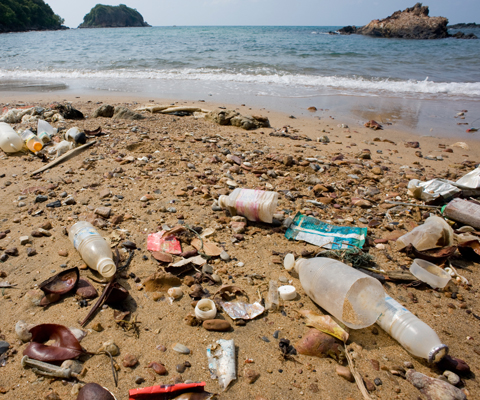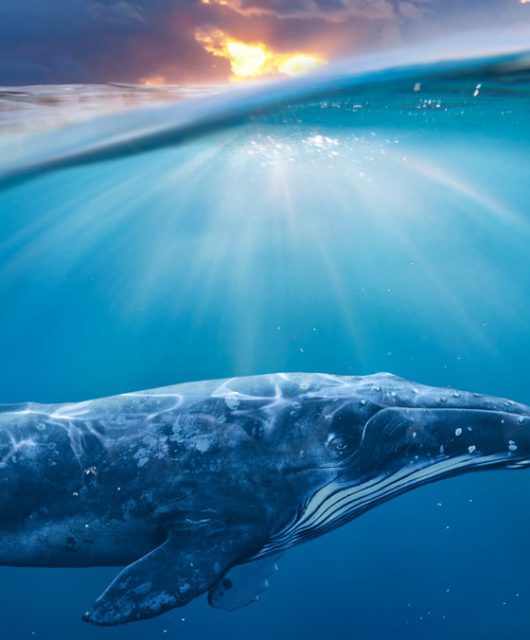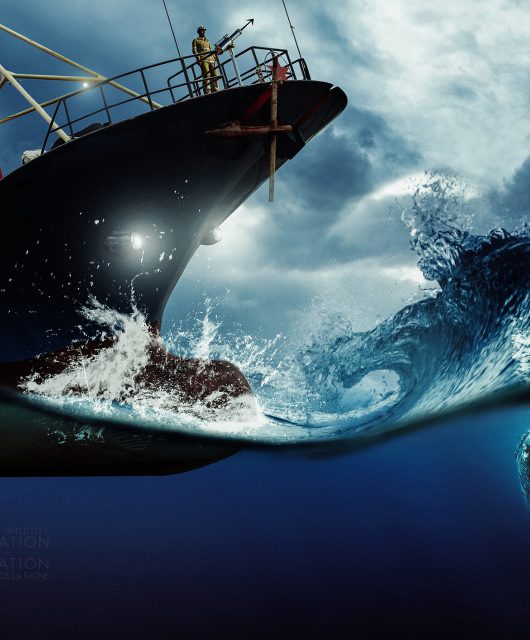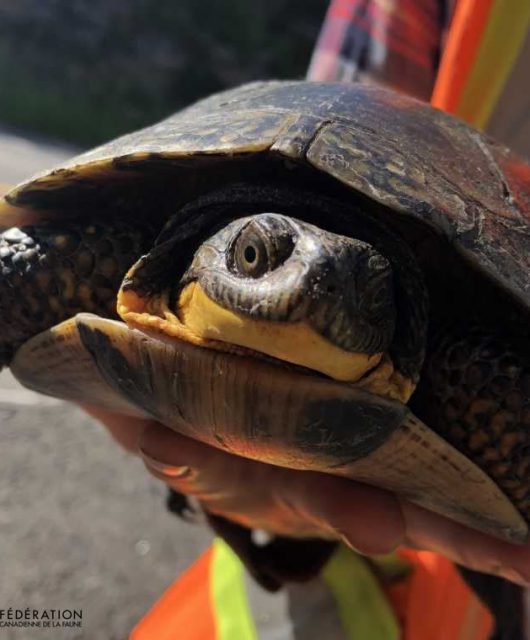
Eighty per cent of ocean pollution is caused by human activity on land. Billions of litres of untreated sewage flow into our waterways, and contaminants are then passed along the food chain. For many marine species, the sea is turning into a deadly obstacle course, as plastics and other waste become unwelcome travelling companions.
Approximately 260 million tonnes of plastic is produced every year, 10 per cent of which finds its way to our oceans. Nearly 80 per cent of marine litter is ushered into the sea via wind and runoff — litter from our roadways make its way to our streams and rivers and eventually gets dumped into our oceans. The remaining debris that enters our waterways comes from ships.
So what happens to the plastic once it gets in the water? The carbon dioxide in the water and the sun’s heat and rays cause the plastic to break down into tinier and tinier pieces. But don’t be mistaken. The plastic doesn’t go away. It just gets smaller. These pieces can weigh as little as a tenth of a paper clip. That’s mini!
Approximately 260 million tonnes of plastic is produced every year, 10 per cent of which finds its way to our oceans. Nearly 80 per cent of marine litter is ushered into the sea via wind and runoff — litter from our roadways make its way to our streams and rivers and eventually gets dumped into our oceans. The remaining debris that enters our waterways comes from ships.
So what happens to the plastic once it gets in the water? The carbon dioxide in the water and the sun’s heat and rays cause the plastic to break down into tinier and tinier pieces. But don’t be mistaken. The plastic doesn’t go away. It just gets smaller. These pieces can weigh as little as a tenth of a paper clip. That’s mini!
A “garbage patch” is created when marine litter is whirled together by a vortex of currents. There are currently five gyres in our oceans: the North and South Pacific, the North and South Atlantic and the Indian Ocean. These gyres make up 40 per cent of the sea. That’s 25 per cent of our planet where plastic garbage is accumulating!
From rubber duckies to tampon applicators, everything we toss in the trash has a gravesite. If it doesn’t end up in a landfill, it inevitably finds its way to the ocean. And as the plastic breaks down into smaller and smaller bits, it often ends up in the bellies of wildlife. Fish, for instance, are unable to distinguish these pieces of plastic from plankton, and readily chow down on it. According to the U.S. National Oceanic and Atmospheric Association, up to 100,000 marine mammals have trash-related deaths each year. Moreover, upwards of 50 per cent of marine reptile species are affected by plastic litter, and a million seabirds become entangled in plastic nets or choke on plastic debris every year. Plastic bags, fishing gear, six-pack rings and glass bottles and other marine debris can remain in the environment for years, killing or injuring right whales, leatherback turtles and many other migratory species that become entangled in the garbage or mistake it for food.




1 comment
Some areas of the world have higher concentrations of microplastics than others. East Asia is one of the worst affected places, with 27 times more plastic found in the seas around Japan than elsewhere in the world.